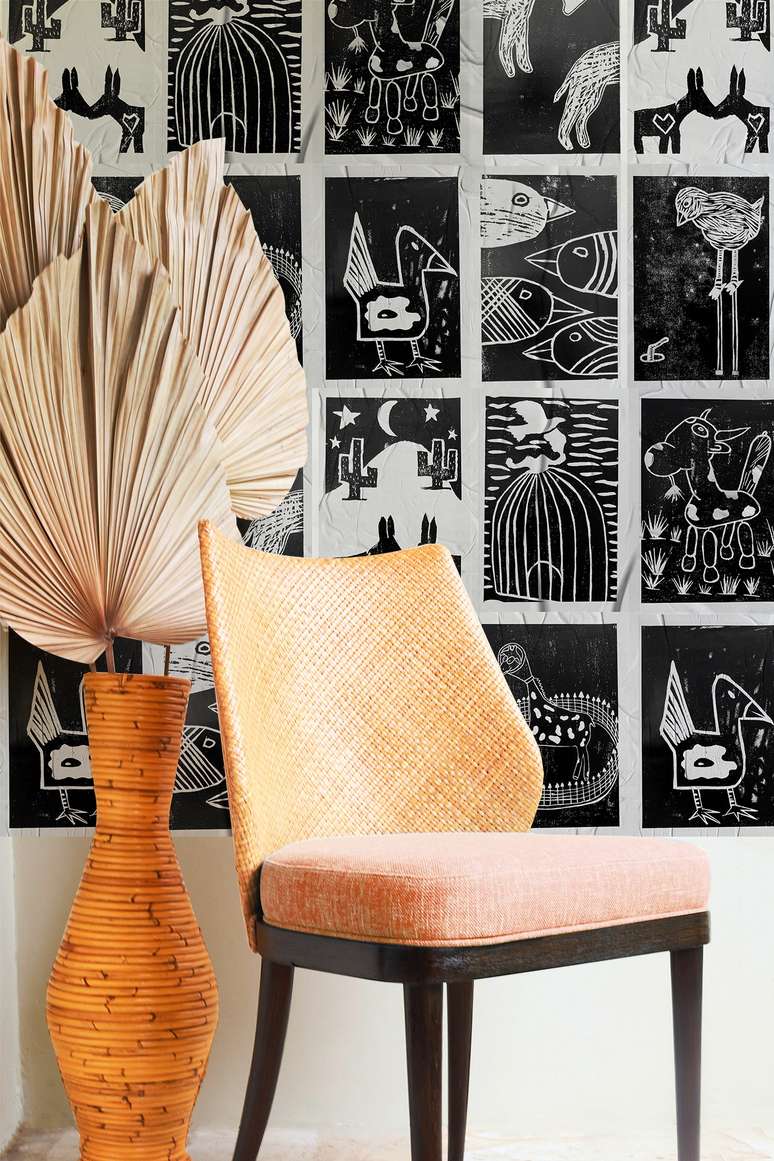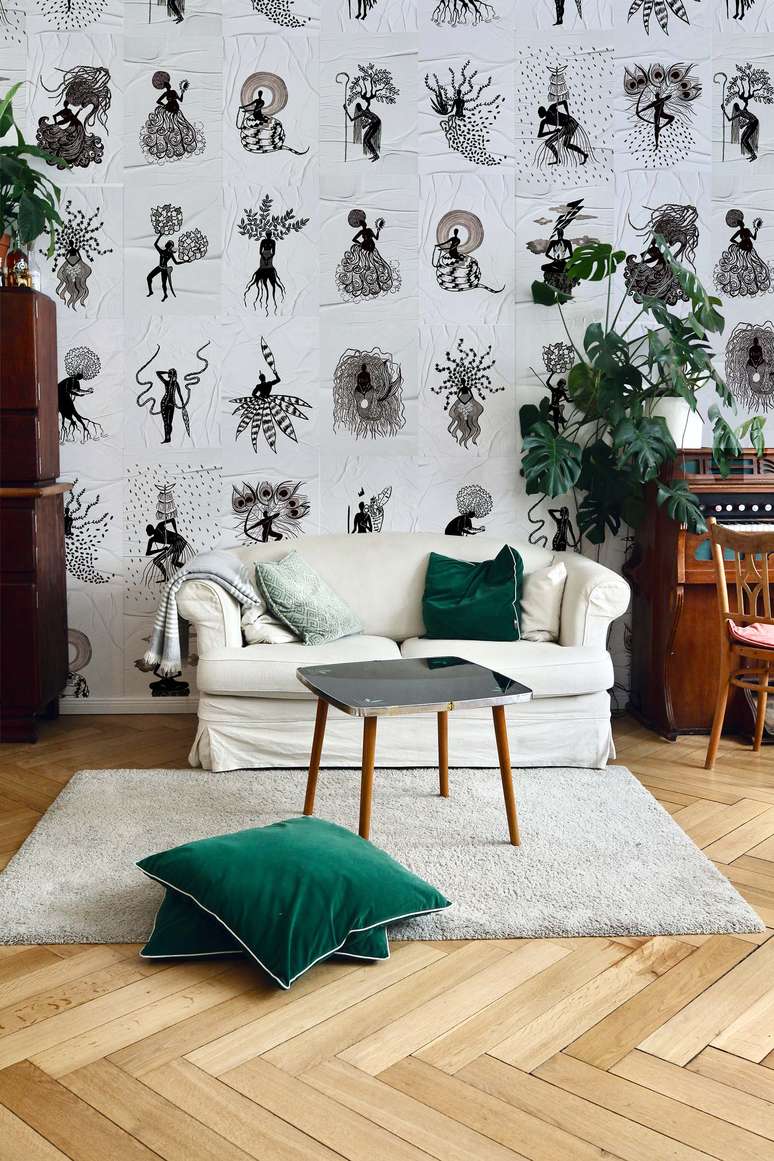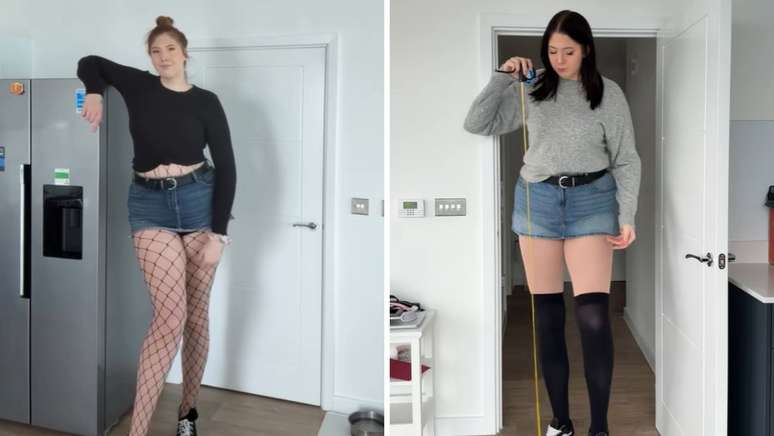Paula Mesquita Lage, CEO of Colado.Art Graffiti Factory, teaches how to apply and maintain lambe-lambe
When decorating walls, the lollipop It is always a good alternative to wallpaper and textures, as well as being a cheap DIY option. Street art is an artistic expression that is gaining ground in interior design, bringing life and personality to homes with lots of color and creativity.
And applying lambe-lambe is simpler and more practical than it may seem. The cultural entrepreneur Paula Mesquita LageCEO of Colado.Art Graffiti Factory, a benchmark in attitude stickers, gives advice on how to stick the sticker on the wall.
How to apply licks to the wall
You will need the following materials: lambe-lambe kit, white glue, water, glue tray, glue roller and a clean, dry cloth (optional).
- Pour some of the diluted glue into a pan. Just use normal white glue diluted with water in a ratio of 1 to 1.
- Using a roller, apply the diluted glue only to the area where the next sticker will be glued. Doing them one at a time prevents the glue from drying before applying the lick.
- Align the lever on the surface on which the diluted glue has been applied, pressing it evenly until all the edges are glued.
- Using the roller, apply a new layer of diluted glue over the newly applied layer. This layer of glue will act as a protective varnish for the paper.
- Repeat this process until you have applied all the licks to the desired surface.
Where to apply lambe-lambe

Lambe-lambe can be applied to various surfaces, such as textured walls, wood and plaster. In the bathroom it can be applied as long as it is not in humid areas. “If you want to place it in dry environments, but which may have some humidity, it is advisable to apply a layer of water-based varnish after installation. This will ensure greater durability and make the surface more resistant to water”, emphasizes Paula.
On walls with light textures, such as graffiti, you can also easily apply lambe-lambe. However, applications on structures with many grooves, such as rough plaster, are not recommended. Wood, on the other hand, adheres well to the glue. “But I do not recommend applying it on laminated surfaces, as they are very smooth. Poor adhesion to the glue interferes with the durability of the lick application,” he emphasizes. And on plaster, just take a look, as the lick has excellent adhesion to it.
How to remove lick from wall
According to Paula Lage, lambe-lambe is also recommended for those who want to decorate a room in a rental property. “The application is so simple that it does not cause any wear or damage to the wall. In addition, when you leave the property, removing the layer of brickwork is easier than painting over it,” she explains.
The owner of Colado.Art also gives advice on how to remove the lick from the wall, even to those who are tired of that image and want to change it, for example, with a new one. First, it is recommended to sand the surface to remove all the wrinkles and the outer layer of paper. Once done, just spread the paint over it.
“If the person is more of a perfectionist and doesn’t want to leave traces of the lick on the wall, just wet the surface well at least three times until the paper softens. Then, it’s worth scraping the paper with a spatula and finishing by rubbing it with a sponge to remove all the residue and then paint,” he explains.
It is worth remembering that lambe-lambe does not require maintenance. “The glue layer works as a kind of paint, so there is no risk of tearing the plate. It remains firm, rigid and well adhered to the wall. From time to time, it is worth using a dry cloth to remove dust”, he concludes.
Source: Terra
Ben Stock is a lifestyle journalist and author at Gossipify. He writes about topics such as health, wellness, travel, food and home decor. He provides practical advice and inspiration to improve well-being, keeps readers up to date with latest lifestyle news and trends, known for his engaging writing style, in-depth analysis and unique perspectives.









